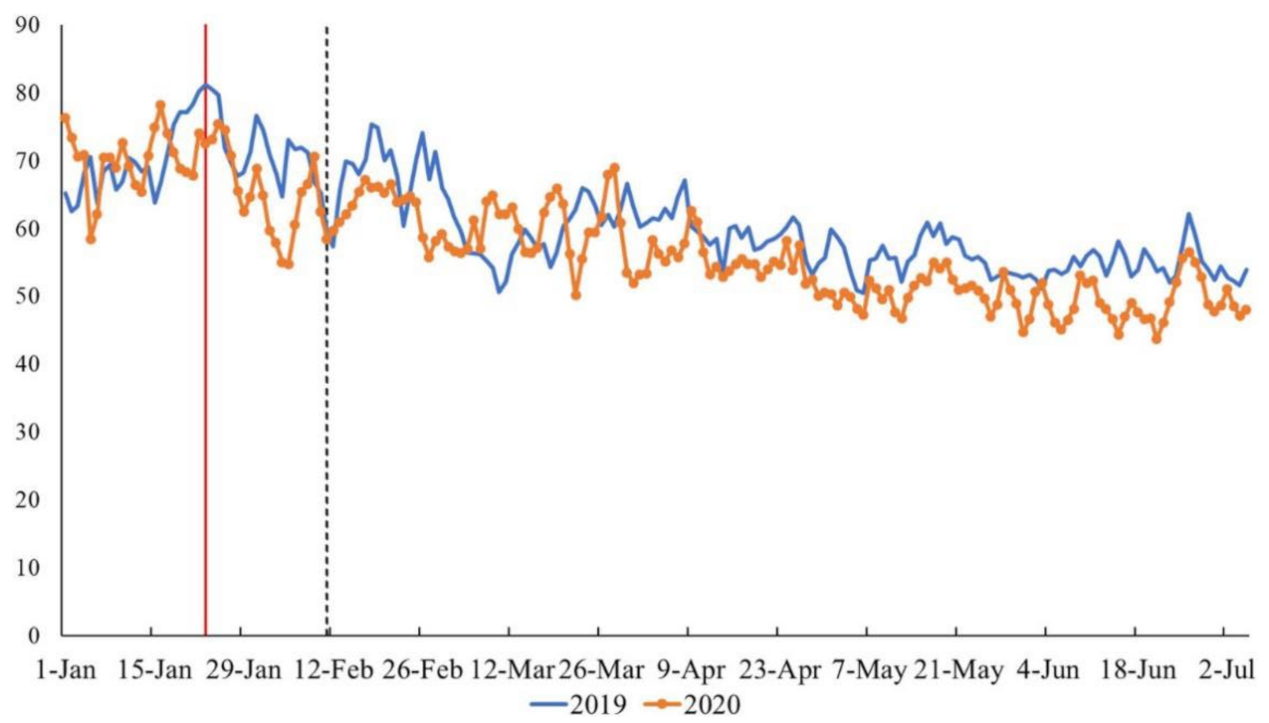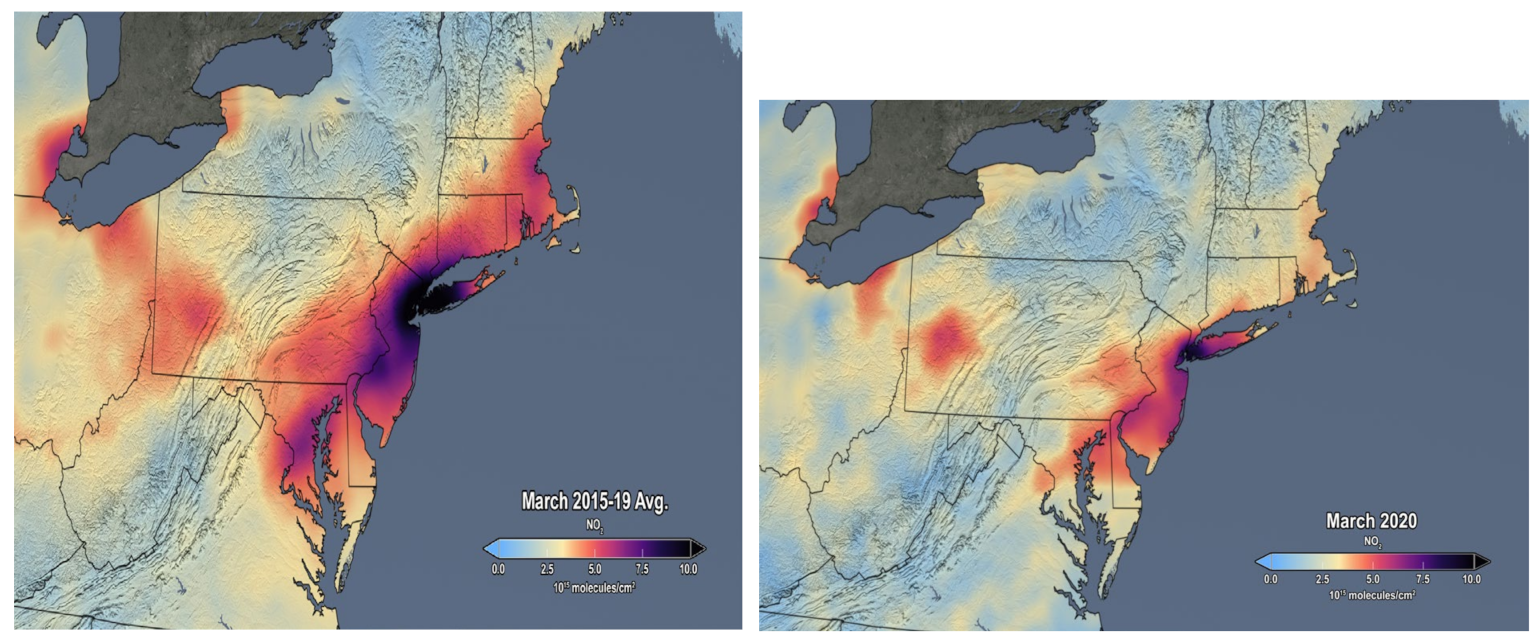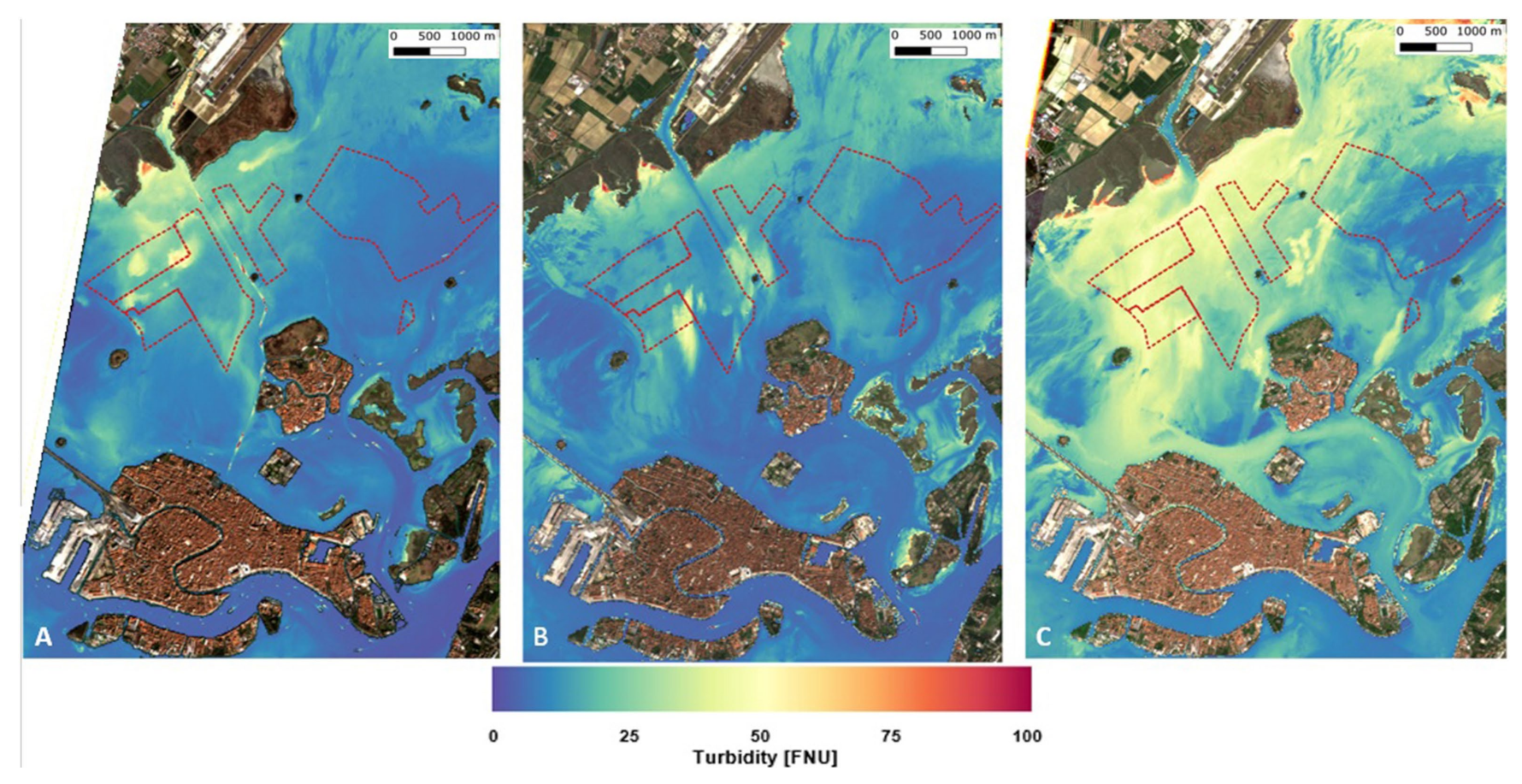Since the World Health Organization (WHO) declared the outbreak of severe acute respiratory syndrome COVID-19 virus 2 (COVID-19) virus disease 2 (SARS-CoV-2) on 9 January 2020, the entire world has been exceptionally interested in examining the impact of this pandemic on people and the environment. The pandemic led to unprecedented measures to halt air traffic and close factories due to lockdowns, economic closures, and the stopping of transportation of all kinds. The decline in the use of coal by power plants, oil refining, and steel manufacturing had a beneficial effect on air pollution and caused a decrease in carbon dioxide emissions. Moreover, the concept of sustainability has become more prevalent, reflecting the increasing awareness of the responsibility placed on every member of society. Sustainability is the quality and quantity of change that meets our needs without destroying the giving planet, which is the hope for the survival of future generations.
- pandemic
- COVID-19
- sustainability
- environmental pollution
- air pollution
1. Introduction
1.1. Human Sustainability
1.2. Social Sustainability
1.3. Economic Sustainability
1.4. Environmental Sustainability
2. Effects of COVID-19

2.1. Effects on Air


2.2. Effects on Water

2.3. Effects on Animals
References
- Bautista-Puig, N.; Lozano, R.; Barreiro-Gen, M. Developing a sustainability implementation framework: Insights from academic research on tools, initiatives and approaches. Environ. Dev. Sustain. 2022, 24, 1–21.
- Feeney, M.; Grohnert, T.; Gijselaers, W.; Martens, P. Organizations, Learning, and Sustainability: A Cross-Disciplinary Review and Research Agenda. J. Bus. Ethics 2022, 1–19.
- Camilleri, M.A. Corporate sustainability and responsibility: Creating value for business, society and the environment. Asian J. Sustain. Soc. Responsib. 2017, 2, 59–74.
- Hambali, A.; Adhariani, D. Sustainability performance at stake during COVID-19 pandemic? Evidence from Sharia-compliant companies in emerging markets. J. Islam. Account. Bus. Res. 2022. ahead-of-print.
- Diesendorf, M. Sustainability: The Corporate Challenge of the 21st Century; Allen & Unwin: Sydney, Australia, 2000; Volume Chapter 2, pp. 19–37.
- Benn, S.; Edwards, M.; Williams, T. Organizational Change for Corporate Sustainability, 4th ed.; Routledge: London, UK, 2018.
- Benn, S.; Edwards, M.; Williams, T. Organizational Change for Corporate Sustainability, 3rd ed.; Routledge: London, UK, 2014.
- Khalaf, A.T.; Wei, Y.; Wan, J.; Zhu, J.; Peng, Y.; Kadir, S.Y.A.; Zainol, J.; Oglah, Z.; Cheng, L.; Shi, Z. Bone Tissue Engineering through 3D Bioprinting of Bioceramic Scaffolds: A Review and Update. Life 2022, 12, 903.
- Starik, M.; Stubbs, W.; Benn, S. Synthesising environmental and socio-economic sustainability models: A multi-level approach for advancing integrated sustainability research and practice. Australas. J. Environ. Manag. 2016, 23, 402–425.
- Liu, X.; Zhang, R.; Shi, H.; Li, X.; Li, Y.; Taha, A.; Xu, C. Protective effect of curcumin against ultraviolet A irradiation-induced photoaging in human dermal fibroblasts. Mol. Med. Rep. 2018, 17, 7227–7237.
- Wei, Y.; Khalaf, A.T.; Ye, P.; Fan, W.; Su, J.; Chen, W.; Hu, H.; Menhas, R.; Wang, L.; Oglah, Z. Therapeutic Benefits of Pomegranate Flower Extract: A Novel Effect That Reduces Oxidative Stress and Significantly Improves Diastolic Relaxation in Hyperglycemic In Vitro in Rats. Evidence-Based Complement. Altern. Med. 2022, 2022, 4158762.
- Available online: https://COVID-19virus-resources.esri.com/datasets/bda7594740fd40299423467b48e9ecf6 (accessed on 28 November 2022).
- Rodríguez-Urrego, D.; Rodríguez-Urrego, L. Air quality during the COVID-19: PM2.5 analysis in the 50 most polluted capital cities in the world. Environ. Pollut. 2020, 266, 115042.
- Khalaf, A.T.; Sun, Y.; Wang, F.; Sheng, M.; Li, Y.; Liu, X. Photodynamic Therapy Using HMME for Port-Wine Stains: Clinical Effectiveness and Sonographic Appearance. BioMed Res. Int. 2020, 2020, 6030581.
- Sarkodie, S.A.; Owusu, P.A. Global assessment of environment, health and economic impact of the novel coronavirus (COVID-19). Environ. Dev. Sustain. 2020, 23, 5005–5015.
- Cheng, L.; Lin, T.; Khalaf, A.T.; Zhang, Y.; He, H.; Yang, L.; Yan, S.; Zhu, J.; Shi, Z. The preparation and application of calcium phosphate biomedical composites in filling of weight-bearing bone defects. Sci. Rep. 2021, 11, 4283.
- Khalaf, A.T.; Wei, Y.; Alneamah, S.J.A.; Al-Shawi, S.G.; Kadir, S.Y.A.; Zainol, J.; Liu, X. What Is New in the Preventive and Therapeutic Role of Dairy Products as Nutraceuticals and Functional Foods? BioMed Res. Int. 2021, 2021, 8823222.
- Wang, L.; Khalaf, A.T.; Lei, D.; Gale, M.; Li, J.; Jiang, P.; Du, J.; Yinayeti, X.; Abudureheman, M.; Wei, Y. Structured oral examination as an effective assessment tool in lab-based physiology learning sessions. Adv. Physiol. Educ. 2020, 44, 453–458.
- Shakil, M.H.; Munim, Z.H.; Tasnia, M.; Sarowar, S. COVID-19 and the environment: A critical review and research agenda. Sci. Total Environ. 2020, 745, 141022.
- Domingo, J.L.; Marquès, M.; Rovira, J. Influence of airborne transmission of SARS-CoV-2 on COVID-19 pandemic. A review. Environ. Res. 2020, 188, 109861.
- Cheng, L.; Khalaf, A.T.; Lin, T.; Ran, L.; Shi, Z.; Wan, J.; Zhou, X.; Zou, L. Exercise Promotes the Osteoinduction of HA/β-TCP Biomaterials via the Wnt Signaling Pathway. Metabolites 2020, 10, 90.
- Khalaf, A.T.; Wan, J. The Influence of Polysaccharide Nucleic Acid of BCG on Serum sIL-2R, IL-10 and TNF-α in Patients with Vitiligo. Basic Clin. Pharmacol. Toxicol. 2020, 126, 64–65.
- Huang, J.; Khalaf, A.T.; Zhang, R.; Xu, C.; Liu, X. Evolving Understanding of Palisaded Encapsulated Neuroma: An Unusual Presentation of Multiple Lesions on the Lips. Basic Clin. Pharmacol. Toxicol. 2019, 125 (Suppl. 6), 4–5.
- Daughton, C.G. Wastewater surveillance for population-wide Covid-19: The present and future. Sci. Total Environ. 2020, 736, 139631.
- Liu, F.; Wang, M.; Zheng, M. Effects of COVID-19 lockdown on global air quality and health. Sci. Total Environ. 2021, 755, 142533.
- Khalaf, A.T.; Liu, J.; Wang, Y.; Samiah, A.K.; Zainol, J.; Doustjalali, S.R.; Sabet, N.S.; Appalanaidu, V.; Al-Jashamy, K.; Bhuiyan, M.; et al. Emotional and Social Wellbeing in Middle and Primary Schools: Hubei, China. Res. J. Med. Sci. 2017, 11, 138–142.
- Sharma, S.; Zhang, M.; Anshika; Gao, J.; Zhang, H.; Kota, S.H. Effect of restricted emissions during COVID-19 on air quality in India. Sci. Total. Environ. 2020, 728, 138878.
- Shehzad, K.; Sarfraz, M.; Shah, S.G.M. The impact of COVID-19 as a necessary evil on air pollution in India during the lockdown. Environ. Pollut. 2020, 266 Pt 1, 115080.
- Shen, X.; Cai, C.; Li, H. Socioeconomic restrictions slowdown COVID-19 far more effectively than favorable weather-evidence from the satellite. Sci. Total Environ. 2020, 748, 141401.
- Vîrghileanu, M.; Săvulescu, I.; Mihai, B.-A.; Nistor, C.; Dobre, R. Nitrogen Dioxide (NO2) Pollution Monitoring with Sentinel-5P Satellite Imagery over Europe during the Coronavirus Pandemic Outbreak. Remote Sens. 2020, 12, 3575.
- Shrestha, A.M.; Shrestha, U.B.; Sharma, R.; Bhattarai, S.; Tran, H.N.T.; Rupakheti, M. Lockdown Caused by COVID-19 Pandemic Reduces Air Pollution in Cities Worldwide. 2020. Available online: https://eartharxiv.org/repository/view/304/ (accessed on 28 November 2022).
- Zambrano-Monserrate, M.A.; Ruano, M.A.; Sanchez-Alcalde, L. Indirect effects of COVID-19 on the environment. Sci. Total Environ. 2020, 728, 138813.
- Khalaf, A.T.; Wan, J.; Hu, W.; Wang, J.; Liu, X.; Tang, S.; Zhang, M.; Shen, F.; Hai, T. Gene Anti-Tumor Therapy Applications to Lung Carcinoma: Adenovirus TOA2 Shows Low Toxicity and Inhibition Effects on Tumor Growth in Nude Mice. Basic Clin. Pharmacol. Toxicol. 2019, 125, 215.
- Venter, Z.S.; Aunan, K.; Chowdhury, S.; Lelieveld, J. COVID-19 lockdowns cause global air pollution declines. Proc. Natl. Acad. Sci. USA 2020, 117, 18984–18990.
- Sicard, P.; De Marco, A.; Agathokleous, E.; Feng, Z.; Xu, X.; Paoletti, E.; Rodriguez, J.J.D.; Calatayud, V. Amplified ozone pollution in cities during the COVID-19 lockdown. Sci. Total Environ. 2020, 735, 139542.
- Khalaf, A.T.; Wan, J.; Al-Jashamy, K.; Kadir, S.Y.A.; Zainol, J.; Doustjalali, S.R.; Sabet, N.S.; Aung, M.K.; Arafeh, Y.H.; Shin, J.L.X.; et al. Nicotine Replacement Therapy and Electronic Cigarettes: Awareness among Medical Students. J. Pharm. Res. Int. 2019, 31, 1–9.
- Cheval, S.; Adamescu, C.M.; Georgiadis, T.; Herrnegger, M.; Piticar, A.; Legates, D.R. Observed and Potential Impacts of the COVID-19 Pandemic on the Environment. Int. J. Environ. Res. Public Health 2020, 17, 4140.
- Friedlingstein, P.; Houghton, R.A.; Marland, G.; Hackler, J.; Boden, T.A.; Conway, T.J.; Canadell, J.G.; Raupach, M.R.; Ciais, P.; Le Quéré, C. Update on CO2 emissions. Nat. Geosci. 2010, 3, 811–812.
- Khan, I.; Shah, D.; Shah, S.S. COVID-19 pandemic and its positive impacts on environment: An updated review. Int. J. Environ. Sci. Technol. 2020, 18, 521–530.
- Khalaf, A.T.; Song, J.-Q.; Gao, T.-T.; Yu, X.-P.; Lei, T.-C. CTLA-4 Gene Polymorphism and the Risk of Systemic Lupus Erythematosus in the Chinese Population. J. Biomed. Biotechnol. 2011, 2011, 167395.
- Khalaf, A.T.; Liu, X.M.; Sheng, W.X.; Tan, J.Q.; Abdalla, A.N. Efficacy and safety of desloratadine combined with dipyridamole in the treatment of chronic urticarial. J. Eur. Acad. Dermatol. Venereol. 2008, 22, 487–492.
- Loh, H.C.; Looi, I.; Ch’Ng, A.S.H.; Goh, K.W.; Ming, L.C.; Ang, K.H. Positive global environmental impacts of the COVID-19 pandemic lockdown: A review. Geojournal 2021, 87, 4425–4437.
- Khalaf, A.T.; Li, W.; Jinquan, T. Current advances in the management of urticarial. Arch. Immunol. Ther. Exp. 2008, 56, 103.
- Addas, A.; Maghrabi, A. The Impact of COVID-19 Lockdowns on Air Quality—A Global Review. Sustainability 2021, 13, 10212.
- Jiquan, S.; Khalaf, A.T.; Jinquan, T.; Xiaoming, L. Necrobiosis lipoidica: A case with histopathological findings revealed asteroid bodies and was successfully treated with dipyridamole plus intralesional triamcinolone. J. Dermatol. Treat. 2008, 19, 54–57.
- Rupani, P.F.; Nilashi, M.; Abumalloh, R.A.; Asadi, S.; Samad, S.; Wang, S. Coronavirus pandemic (COVID-19) and its natural environmental impacts. Int. J. Environ. Sci. Technol. 2020, 17, 4655–4666.
- Gregg, E.A.; Kusmanoff, A.M.; Garrard, G.E.; Kidd, L.R.; Bekessy, S.A. Biodiversity conservation cannot afford COVID-19 communication bungles. Trends Ecol. Evol. 2021, 36, 879–882.
- McNeely, J.A. Nature and COVID-19: The pandemic, the environment, and the way ahead. Ambio 2021, 50, 767–781.
- Mahato, S.; Pal, S.; Ghosh, K.G. Effect of lockdown amid COVID-19 pandemic on air quality of the megacity Delhi, India. Sci. Total Environ. 2020, 730, 139086.
- Gautam, S. The Influence of COVID-19 on Air Quality in India: A Boon or Inutile. Bull. Environ. Contam. Toxicol. 2020, 104, 724–726.
- Gope, S.; Dawn, S.; Das, S.S. Effect of COVID-19 pandemic on air quality: A study based on Air Quality Index. Environ. Sci. Pollut. Res. 2021, 28, 35564–35583.
- Saha, L.; Kumar, A.; Kumar, S.; Korstad, J.; Srivastava, S.; Bauddh, K. The impact of the COVID-19 lockdown on global air quality: A review. Environ. Sustain. 2022, 5, 5–23.
- He, G.; Pan, Y.; Tanaka, T. COVID-19, city lockdowns, and air pollution: Evidence from China. medRxiv 2020, 727, 138704.
- Zhu, Y.; Xie, J.; Huang, F.; Cao, L. Association between short-term exposure to air pollution and COVID-19 infection: Evidence from China. Sci. Total Environ. 2020, 727, 138704.
- Coccia, M. Factors determining the diffusion of COVID-19 and suggested strategy to prevent future accelerated viral infectivity similar to COVID. Sci. Total Environ. 2020, 729, 138474.
- Connerton, P.; De Assunção, J.V.; De Miranda, R.M.; Slovic, A.D.; Pérez-Martínez, P.J.; Ribeiro, H. Air Quality during COVID-19 in Four Megacities: Lessons and Challenges for Public Health. Int. J. Environ. Res. Public Health 2020, 17, 5067.
- Huang, X.; Ding, A.; Gao, J.; Zheng, B.; Zhou, D.; Qi, X.; Tang, R.; Ren, C.; Nie, W.; Chi, X.; et al. Enhanced Secondary Pollution Offset Reduction of Primary Emissions during COVID-19 Lockdown in China. Natl. Sci. Rev. 2021, 8, nwaa137.
- Wang, P.; Chen, K.; Zhu, S.; Wang, P.; Zhang, H. Severe air pollution events not avoided by reduced anthropogenic activities during COVID-19 outbreak. Resour. Conserv. Recycl. 2020, 158, 104814.
- Isaan, R.J. The dramatic impact of Coronavirus outbreak on air quality: Have it saved as much as it has killed so far? Glob. J. Environ. Sci. Manag. 2020, 6, 275–288.
- Khalaf, A.T.; Feng, L.L.; Samiah, A.K.; Zainol, J.; Doustjalali, S.R.; Sabet, N.S.; Appalanaidu, V.; Al-Jashamy, K.; Muftah, A.E. Integrative and Holistic Approach for Immunological Disorders using Electroacupuncture. Int. J. Appl. Bus. Econ. Res. 2017, 15, 255–261.
- Grange, S.K.; Lee, J.D.; Drysdale, W.S.; Lewis, A.C.; Hueglin, C.; Emmenegger, L.; Carslaw, D.C. COVID-19 lockdowns highlight a risk of increasing ozone pollution in European urban areas. Atmospheric Meas. Tech. 2021, 21, 4169–4185.
- Wang, Q.; Su, M. A preliminary assessment of the impact of COVID-19 on environment—A case study of China. Sci. Total Environ. 2020, 728, 138915.
- Wang, H.; Tan, J.; Li, X. Global NO 2 dynamics During the COVID-19 pandemic: A comparison between two waves of the coronavirus. IEEE J. Sel. Top. Appl. Earth Obs. Remote Sens. 2021, 14, 4310–4320.
- Mandal, A.; Roy, R.; Ghosh, D.; Dhaliwal, S.; Toor, A.; Mukhopadhyay, S.; Majumder, A. COVID-19 pandemic: Sudden restoration in global environmental quality and its impact on climate change. EnerarXiv Prepr. 2020.
- Kraemer, M.U.; Yang, C.H.; Gutierrez, B.; Wu, C.H.; Klein, B.; Pigott, D.M.; Scarpino, S.V. The effect of human mobility and control measures on the COVID-19 epidemic in China. Science 2020, 368, 493–497.
- Le Quéré, C.; Jackson, R.B.; Jones, M.W.; Smith, A.J.; Abernethy, S.; Andrew, R.M.; De-Gol, A.J.; Willis, D.R.; Shan, Y.; Canadell, J.G.; et al. Temporary reduction in daily global CO2 emissions during the COVID-19 forced confinement. Nat. Clim. Chang. 2020, 10, 647–653.
- Saadat, S.; Rawtani, D.; Hussain, C.M. Environmental perspective of COVID-19. Sci. Total Environ. 2020, 728, 138870.
- Braga, F.; Scarpa, G.M.; Brando, V.E.; Manfè, G.; Zaggia, L. COVID-19 lockdown measures reveal human impact on water transparency in the Venice Lagoon. Sci. Total Environ. 2020, 736, 139612.
- Bar, H. COVID-19 lockdown: Animal life, ecosystem and atmospheric environment. Environ. Dev. Sustain. 2020, 23, 8161–8178.
- Dalezios, N.R. Remote Sensing Applications in Environmental and Earth System Sciences; CRC Press: Boca Raton, FL, USA, 2021.
- Zhong, B.-L.; Luo, W.; Li, H.-M.; Zhang, Q.-Q.; Liu, X.-G.; Li, W.-T.; Li, Y. Knowledge, attitudes, and practices towards COVID-19 among Chinese residents during the rapid rise period of the COVID-19 outbreak: A quick online cross-sectional survey. Int. J. Biol. Sci. 2020, 16, 1745–1752.
- Acter, T.; Uddin, N.; Das, J.; Akhter, A.; Choudhury, T.R.; Kim, S. Evolution of severe acute respiratory syndrome coronavirus 2 (SARS-CoV-2) as coronavirus disease 2019 (COVID-19) pandemic: A global health emergency. Sci. Total Environ. 2020, 730, 138996.
- Yoo, H.S.; Yoo, D. COVID-19 and veterinarians for one health, zoonotic-and reverse-zoonotic transmissions. J. Vet. Sci. 2020, 21, e51.
- Singla, R.; Mishra, A.; Joshi, R.; Jha, S.; Sharma, A.R.; Upadhyay, S.; Sarma, P.; Prakash, A.; Medhi, B. Human Animal interface of SARS-COV-2(COVID-19) transmission: A critical appraisal of scientific evidences. Vet. Res. Commun. 2020, 44, 119–130.
- Hayward, J.A.; Tachedjian, G. Retroviruses of Bats: A Threat Waiting in the Wings? mBio 2021, 12, e01941-e21.
- Lavialle, C.; Cornelis, G.; Dupressoir, A.; Esnault, C.; Heidmann, O.; Vernochet, C.; Heidmann, T. Paleovirology of ‘syncytins’, retroviral env genes exapted for a role in placentation. Philos. Trans. R. Soc. B Biol. Sci. 2013, 368, 20120507.
- Arora, N.K.; Pandey, P.; Egamberdieva, D.; Fatima, T. COVID-19 pandemic: Aggressive research, vaccination, testing, and environmental sustainability are the way forward. Environ. Sustain. 2021, 4, 443–445.
- Philavong, C.; Pruvot, M.; Reinharz, D.; Mayxay, M.; Khammavong, K.; Milavong, P.; Rattanavong, S.; Horwood, P.F.; Dussart, P.; Douangngeun, B.; et al. Perception of health risks in Lao market vendors. Zoonoses Public Health 2020, 67, 796–804.
- Ranjan, A.K.; Patra, A.; Gorai, A. Effect of lockdown due to SARS COVID-19 on aerosol optical depth (AOD) over urban and mining regions in India. Sci. Total Environ. 2020, 745, 141024.
